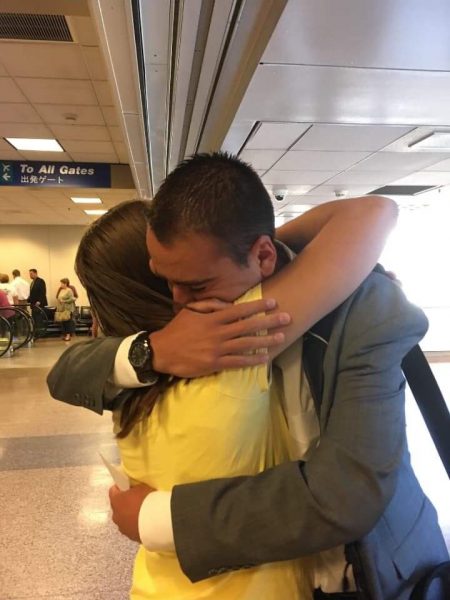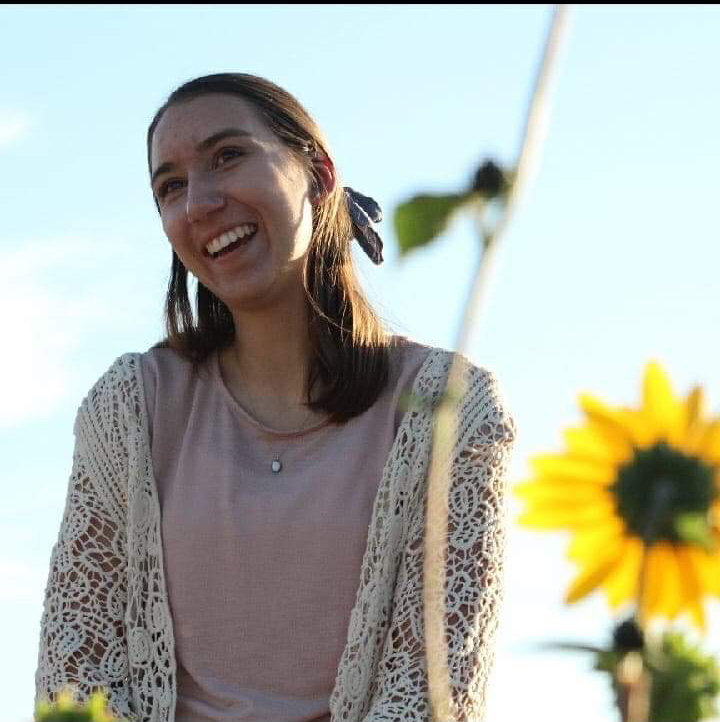It takes a village — Tiffany Lanning fights through Borderline Personality Disorder
Tiffany Lanning’s day-to-day schedule looks like that of an average college student at first glance.
Her 40-hour work week is split between her sewing business, working as a certified nursing assistant at a memory care facility and instructing swing dancing at the Cache Valley Fun Park. Her 14-credit school hours are spent studying health education and promotion with an emphasis in health science.
But on the inside, Lanning faces additional challenges in the form of borderline personality disorder, or BPD.
Lanning is one of four million people who suffers from BPD, which equals out to about 1.6% of the population.
According to a healthline.com article, people with BPD “have a fear of abandonment, struggle to maintain healthy relationships, have very intense emotions, act impulsively, and may even experience paranoia and dissociation.”
BPD has taken over Lanning’s idea of what a normal life looks like, or what she thought it looked like. It also affects the way people feel and think about themselves and others.
The voice in Lanning’s head whispers negative thoughts. Suicidal ideation and the desire to self-harm come and go.
Lanning tried to find solace and healing through her parents, who thought she was only “sick for the attention,” which left Lanning in a search of a new support system.
“My family doesn’t really like it, but in that situation, your family doesn’t have to be your biggest support system,” Lanning said.
The question she asks herself daily is not only if she will survive another day, but how.
“I have to stay alive for David,” she whispers into the mirror. “I promised I would stay alive for David.”
When David Lanning, Tiffany Lanning’s younger brother and only sibling, left on his mission for The Church of Jesus Christ of Latter-day Saints over a year ago, he made Tiffany promise him one thing: that he would see her again when he returned home.
He has become her reason to keep living.

David and Tiffany Lanning have been each other’s confidants from the time they could both talk. They worked through their parents’ divorce together. He remains her constant support as they seek to combat their family’s communication struggles.
By keeping herself busy, Lanning said, she is able to handle whatever comes her way. But as soon as she hits a slow point, life can get a little more challenging.
In the minds of people with BPD, close friends and family can be seen as all good or all bad.
For Lanning, a fear of abandonment takes over her mind, known as “splitting.”
“You’re either my favorite person in the world or the worst person on the planet,” Lanning said.
She constantly worries that those she cares for are just going to leave, which means she almost always tries to leave first.
Physically, Lanning’s body is present, but mentally, she zones out, which Lanning’s doctors say is a way to cope with trauma. This is referred to as disassociation.
Just two years ago, Lanning was about to begin her own missionary service. She was called to serve in the church’s New Mexico Farmington Mission, had begun learning Navajo and was gearing up for the day she would report to the Missionary Training Center in Provo.
A week into the MTC, Lanning’s anxiety presented challenges for her work as a missionary.
“The MTC made me call my mom, even though I already knew what she was going to say to me,” Lanning said. “I was basically told that I wasn’t trying hard enough and I needed to stay longer.”
It took Lanning four days to convince the mission president and her zone leader that something was seriously wrong.
“They tried to tell me that I was just homesick. They wanted me to see a mission doctor and try to get meds,” Lanning said. “And things kept getting worse and worse and worse.”
Maya Allred, Lanning’s mission companion, was aware of Lanning’s situation and found she could relate through her own experience.
“She would talk about what was going on in her mind and some of the feelings she felt, and when she was deciding to go home it was even more apparent that it was anxiety-related,” Allred said. “She just had so much worry all the time.”
Tiffany was released from her missionary service the following Tuesday, and by Wednesday, her car was packed to the brim, ready for her return to Utah State University.
She went from spending a week attached to Allred to spending hours alone in her grandparents’ basement.
Lanning was left to fight through constant doctors’ appointments and therapy on her own.
“I had such a hard time coming home,” Lanning said. “I was super hard on myself and felt super guilty. You get your mind so focused that the next 18 months are laid out. And then to have it cut that much shorter, it was super tough.”
Lanning’s medical team could only pinpoint anxiety, even though results hinted something else was present. Depression, self-harm and a sexual assault case led to a PTSD-related medical overdose a few months later, at the year mark of opening her mission call.
She was taken to the hospital by her close friends Aaron Gill and Rachael Belnap. Lanning regarded the two as the closest family she had.
Together with Quinn Spackman, the three make up her “crisis team,” the people she has on-call for any bad days.
The four met through the USU Country Swing club and have remained close ever since. They convinced her that her trials were something she could no longer face alone.
“Friends definitely became my family at that point because they were the only ones that stuck around,” Lanning said.
Gill had seen many of Lanning’s episodes, including moments of complete unresponsiveness.
“That’s kind of scary,” Gill said. “She has a lot of really good days and some really bad days, and sometimes, both can happen on the same day.”
Gill, Spackman and Belnap are often the only people that can talk Lanning through her episodes, something very few people are trusted by Lanning to do.
“I do have a different relationship with her because I essentially came into her life when all this happened,” Gill said. “I have been the one to be there in a crisis, but not when things are calm. We only know how to interact with each other in the frame of emotional support.”
Belnap, however, started out as Lanning’s friend, became her caregiver for a bit and went back to being her friend again.
“It took me a while to go from being a friend to being someone who helped take care of her,” Belnap said. “I was basically like her in-home nurse. I would go visit her at her apartment and make sure she had more than chocolate milk and pickles in her fridge.”
Spackman has found ways to distract Lanning in her moments of hardship, including movies, learning new swing dance moves or going on walks. But even those moments aren’t always easy.
“It’s hard emotionally because I don’t like to see someone else in pain, and it’s a tough spot to be in, not knowing when those hard days are going to come,” Spackman said. “You never know if it’s going to be a five-minute fix or if it’s going to be hours, days or weeks that she is going through it.”
Gill has become a sounding board but has also found his experience with Lanning to be “uniquely difficult.”
“The thing I’ve learned is that I get so drained whenever I try to help Tiff,” Gill said. “It just kind of makes me realize how strong she has to be to do this. She does it every day.”
Lanning has become an advocate of mental health through her experiences and college studies. She has learned so much that she chose a minor in mental health awareness and advocacy.
She seeks to help others understand their own mental health journey through what she has learned. She’s also found healthier ways to cope than self-harm.
One of the main methods is through word splurges or journaling. Where spoken words fail, written words speak for Lanning.
“Tiffany handwrote me when she attempted suicide and actually told me what was going on in her mind, instead of just what she wanted me to see,” Allred said. “I tried to just be a place where she could release those feelings without being judged and without trying to fix her problems.”
Lanning still faces a lengthy recovery process, but now she isn’t alone. She’s found a village of supporters willing to help, who are educating themselves along the way with Lanning as she seeks to learn more about her disorder.
“We all have unique differences and healing doesn’t have to be one-size-fits-all,” Lanning said. “I want to get to the point where I can openly talk about it and use my story to help others dealing with the same thing.”
Lanning encourages others who might be struggling with mental health to find people that can help support in times of trouble.
“Don’t do what I did and feel like you can do it on your own,” Lanning said. “No matter how much you think you can, in the end, you really can’t.”
Every day is still a struggle, but she’s managed to still the voices for another day.
And she’s still alive. For David.
—kortni.marie.wells@aggiemail.usu.edu
@kortniwells

